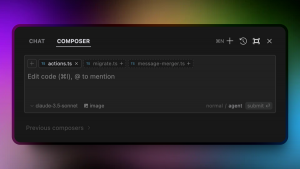IBM, Nvidia Announce Partnership Around Power Servers
![]() IBM and high-end GPU processor manufacturer Nvidia have announced a partnership to accelerate the floating point processing of IBM’s high-end Power Systems servers with Nvidia Tesla GPU chips. This will be the first time that the Nvidia GPUs, popular in high-performance computing (HPC) and used on about 50 of the top 500 supercomputers in operation today, will be used as a regular part of the architecture of a commercial server line, said Brad McCredie, VP and IBM Fellow.
IBM and high-end GPU processor manufacturer Nvidia have announced a partnership to accelerate the floating point processing of IBM’s high-end Power Systems servers with Nvidia Tesla GPU chips. This will be the first time that the Nvidia GPUs, popular in high-performance computing (HPC) and used on about 50 of the top 500 supercomputers in operation today, will be used as a regular part of the architecture of a commercial server line, said Brad McCredie, VP and IBM Fellow.
As part of the agreement, IBM Labs is reviewing its extensive line of business software and middleware and will develop versions of appropriate software optimized to use the Nvidia GPU to accelerate performance. “If you look at commercial workloads — especially around analytics, big data and streaming capability — there’s a lot of compute grade workloads in this space in the commercial marketplace,” McCredie said.
Initially the Nvidia GPUs will be put in PCI cards and plugged into existing Power Server models. “As we move further down the line, when we have the time to design, from scratch, servers with the Power CPU and Nvidia GPU, you will see more workload-optimized systems,” McCredie said. This implies that some future Power Server systems may have the Nvidia GPU mounted directly on the motherboard to maximize performance.
This announcement is the first offshoot of the August OpenPower Consortium announcement of an agreement involving IBM, Nvidia, Google, Mellanox, and Tyan to develop and manufacture a next-generation server for use in the hyperscale data centers that power Google’s Cloud services. However, it may not be the last. While he obviously cannot comment specifically on agreements that are not yet signed, McCredie said further announcements involving Power and other Consortium partners are likely. For instance, IBM might seek a side partnership with Mellanox to use that vendor’s high-speed IO, also a fixture in HPC, in Power Systems optimized to support IO-intensive workloads such as large scale virtual desktop infrastructure (VDI) or internal mobile computing in large retail chains or healthcare provider environments.
“OpenPower is about coinvention with our partners in the Consortium,” McCredie said. And this may not be limited to the initial list of Consortium members. IBM has received inquiries from a large number of other vendors, including Nvidia and IBM partners, about joining the organization. At this point, McCredie said, the original set of partners are still developing the rules and arrangements under which they will collaborate.
McCredie sees the IBM/Nvidia announcement as particularly significant for the development of future big data analysis, at least some of which is likely to be brought in-house by companies that want to combine, for instance social media data on what people are saying about the company and its products with internal data on sales and customer inquiries to measure the effectiveness of a marketing campaign.
“These scenarios are very possible,” McCredie says. “The manual [on big data] hasn’t been written yet.”
Visual courtesy Nvidia
A message from John Furrier, co-founder of SiliconANGLE:
Your vote of support is important to us and it helps us keep the content FREE.
One click below supports our mission to provide free, deep, and relevant content.
Join our community on YouTube
Join the community that includes more than 15,000 #CubeAlumni experts, including Amazon.com CEO Andy Jassy, Dell Technologies founder and CEO Michael Dell, Intel CEO Pat Gelsinger, and many more luminaries and experts.
THANK YOU













